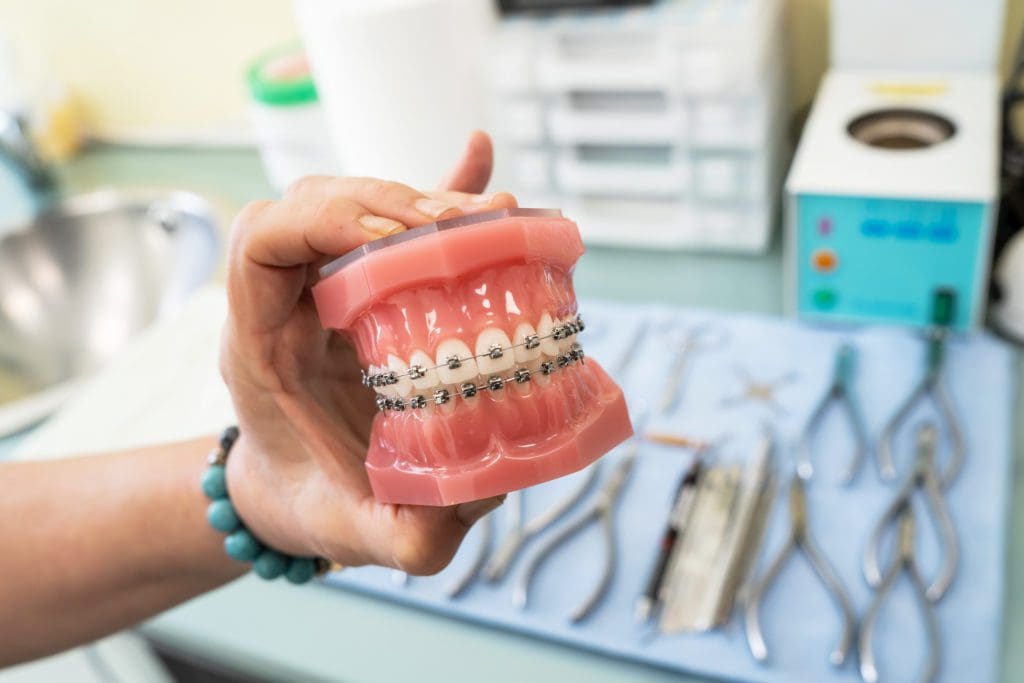How Cumming Orthodontics Addresses Common Braces and Invisalign Concerns
How Cumming Orthodontics Addresses Common Braces and Invisalign Concerns
Blog Article
Comprehensive Overview to Orthodontics Procedures for Remedying Oral Misalignments
In the world of orthodontics, the journey to accomplishing a perfectly lined up smile entails a myriad of procedures tailored to deal with dental imbalances. From typical braces to undetectable aligners and also surgical alternatives, the field of orthodontics uses a variety of remedies to deal with differing degrees of dental abnormalities. Recognizing the complexities of each treatment, including their devices, advantages, and potential downsides, is essential in making notified choices about one's orthodontic treatment. As we browse with the detailed overview to orthodontic procedures for dealing with dental imbalances, the elaborate details of each technique will unfold, clarifying the path toward a harmonious and practical dental positioning.
Orthodontic Procedures Overview

Along with standard braces and clear aligners, orthodontists might also advise other treatments like headgear, palatal expanders, or retainers to resolve particular alignment problems (orthodontist). These treatments are customized to every person's distinct demands and may include a mix of therapies to achieve the preferred outcomes. Regular modifications and surveillance are vital parts of orthodontic treatment to make certain progress gets on track and to make any kind of required alterations in the process. By going through orthodontic procedures, individuals can not just achieve a straighter grin however also enhance their total oral wellness and function.
Traditional Braces: How They Work
When taking into consideration orthodontic therapies for oral imbalances, standard braces stand apart as a time-tested method for correcting teeth positioning. Traditional braces contain braces, cables, and bands that interact to use continuous pressure on the teeth, progressively relocating them right into the wanted positioning. The brackets are affixed to the teeth utilizing an unique adhesive, and the cables are threaded through the brackets. By adjusting the stress of the cords, orthodontists can manage the instructions and pressure used to each tooth, directing them into proper placement in time.
As stress is used to the teeth through the braces, the bone surrounding the teeth is reshaped to support the new tooth settings. Individuals will certainly require normal changes at the orthodontist's workplace to make certain the dental braces proceed to use the correct pressure for effective teeth movement.
Unnoticeable Aligners: Benefits And Drawbacks
Unseen aligners supply a very discreet and hassle-free alternative to traditional braces for correcting dental misalignments. These clear, tailor-made trays are essentially undetectable when used, making them an attractive choice for people seeking a more aesthetically pleasing orthodontic treatment. One of the primary benefits of unseen aligners is their removability, permitting for less complicated upkeep of dental hygiene contrasted to conventional dental braces. Patients can remove the aligners prior to consuming or brushing their teeth, lowering the risk of food obtaining stuck in the appliance and streamlining the cleansing process.

Surgical Orthodontic Options
Surgical treatments in orthodontics existing viable options for attending to intricate oral imbalances that may not be efficiently solved through conventional orthodontic treatments. While undetectable aligners and traditional braces can fix many orthodontic issues, particular cases need surgical intervention to accomplish optimal results. Surgical orthodontic options are generally recommended for severe malocclusions, significant jaw disparities, and situations where the underlying bone framework needs modification to attain appropriate placement.
One typical surgical orthodontic procedure is orthognathic surgical procedure, which entails repositioning the jaws to fix functional problems such as trouble talking or eating. This surgical treatment is typically done in partnership with an orthodontist who helps straighten the teeth before and after the procedure. Surgical orthodontics may likewise involve treatments to subject impacted teeth, eliminate excess gum cells, or reshape the jawbone to develop a much more unified facial account.
Before considering medical orthodontic options, people go through a comprehensive analysis to figure out the necessity and possible benefits of such treatments. cumming orthodontist. While surgery might seem overwhelming, it can Web Site substantially improve both the feature and aesthetic appeals of the smile in cases where standard orthodontic treatments drop short
Retainers and Post-Treatment Care

Failure to conform with post-treatment care directions can result in relapse, where the teeth gradually move back towards their original positions. Consistent retainer wear, good dental hygiene, and routine dental check-ups are important for maintaining the results achieved via orthodontic surgical procedure and ensuring the long-term security of the dealt with oral positioning.
Final Thought
In conclusion, orthodontic treatments offer various alternatives for remedying oral imbalances. Surgical orthodontic options are readily available for extra serious misalignments. In general, orthodontic treatments can efficiently improve dental health and wellness and aesthetic look.
As we navigate with the comprehensive overview to orthodontic treatments for fixing dental misalignments, the complex information of each technique will certainly unfold, shedding light on the path toward a functional and unified dental positioning. - aligners
One of the most usual orthodontic therapies is the use of braces, which are composed of steel brackets and cords that use gentle stress to slowly move teeth into the preferred placement.When thinking about orthodontic therapies for oral misalignments, standard dental braces stand out as a reliable method for dealing with teeth placing. Furthermore, unnoticeable aligners may not be ideal for complex orthodontic problems that news need even more significant teeth motion, as they are typically recommended for moderate to moderate situations. Retainers are tailor-made orthodontic tools made to hold teeth in their corrected positions after the completion of orthodontic treatment.
Report this page